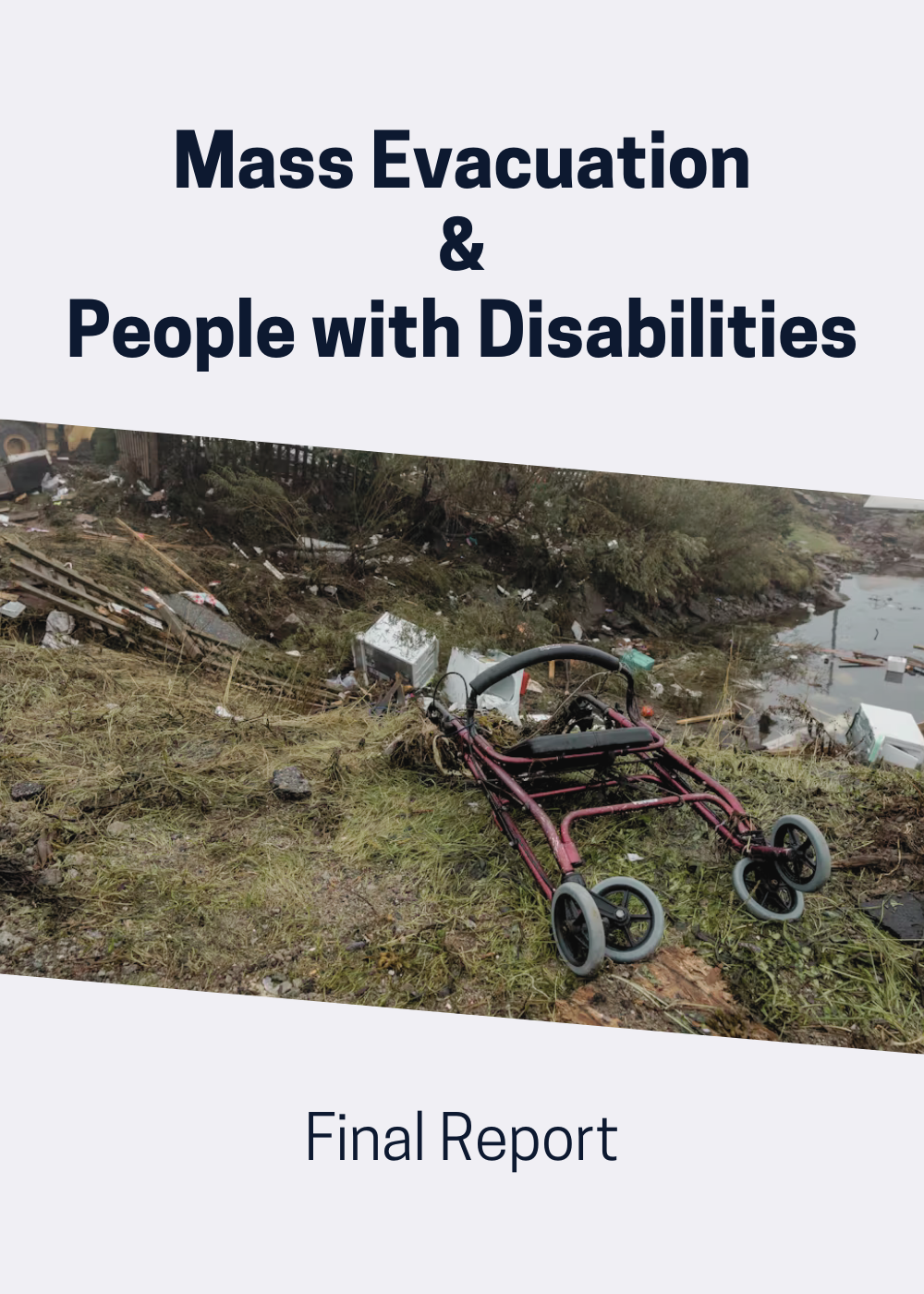Emergency Response for People With Disabilities
Improving the accessibility of emergency response
Advancements in accessibility and rights for people with disabilities have increased concern at all orders of government for improving emergency services for people with disabilities. Often the main focus of emergency managers is to increase public emergency awareness, but how can emergency processes be better informed by the perceptions and needs of the public, especially people with disabilities?
RESEARCH: Evacuating Persons with Disabilities (Accessibility Standards Canada)
In 2021, the MacEachen Institute received funding from to study Evacuating Persons with Disabilities.Ěý
The project analyzes four stages of evacuation: communication and alert; transportation; shelter; and return to community, with a focus on improvements for people with disabilities.
Read the final report:

Read reports, briefing notes, and presentations exploring each phase of evacuation:
RESEARCH: Environmental Scan of Policies and Programs (Employment and Social Development Canada)
The MacEachen Institute received funding from to scan Canadian federal, provincial and territorial jurisdictions for existing approaches, best practices, policies and procedures that exist at the intersection of persons with disabilities and emergency management.
This project is meant to be initial scanning work of policies and programs to support persons with disabilities during an emergency; it is not a comprehensive catalogue of all emergency measures for persons with disabilities in Canada.
 Ěý
Ěý
Ěý
Ěý

This project is funded in part by the Government of Canada (Accessibility Standards Canada) and the Social Sciences and Humanities Research Council.Ěý
“The opinions and interpretations in this publication are those of the author and do not necessarily reflect those of the Government of Canada.”


